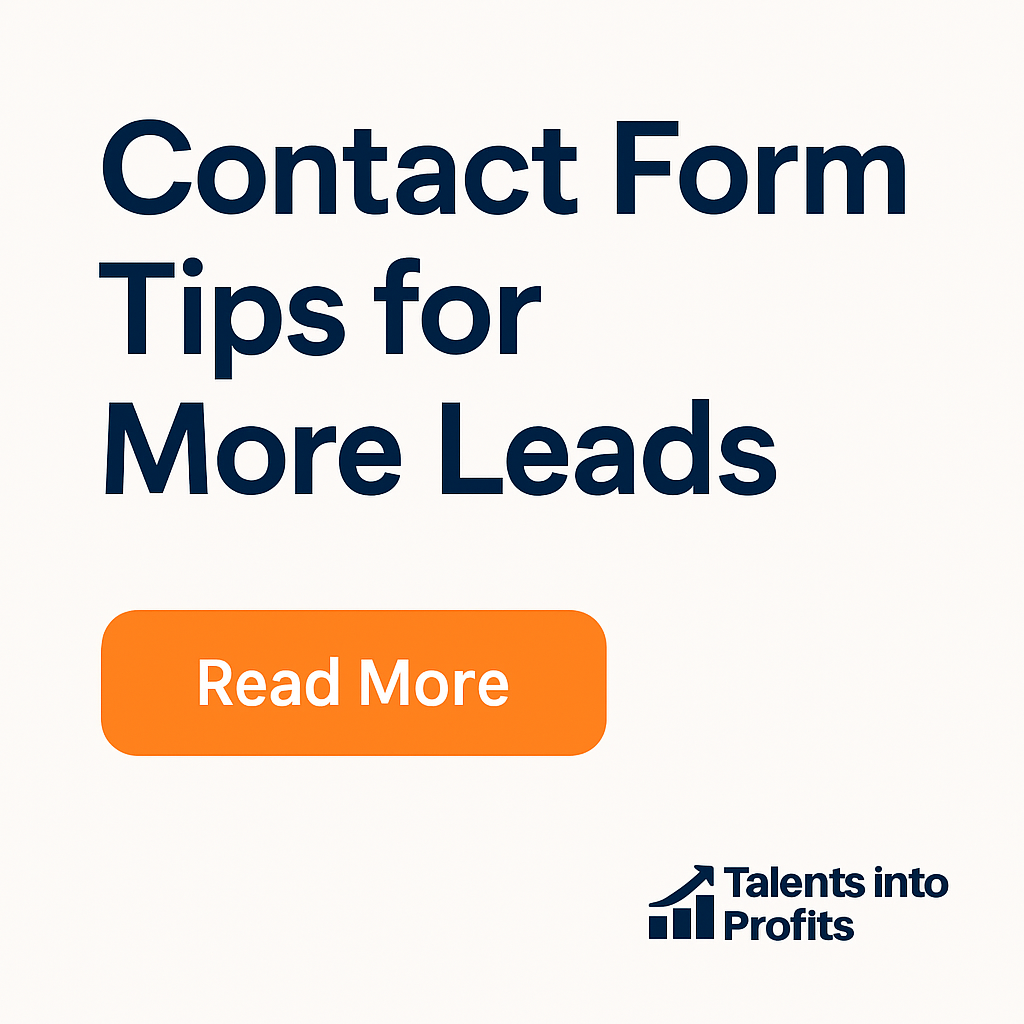Bookkeeping and Accounting Basics for Home Services Companies
Let's first start with a glossary of accounting and bookkeeping terms you have to know when running a local home services business.
Bookkeeping: The process of recording and organizing all financial transactions in a business, including sales, purchases, payments, and receipts. It's the foundation of the business's accounting system.
Employee Cost: This includes not just the hourly wage or salary of an employee but also additional expenses such as benefits, payroll taxes, training costs, and equipment or software they use.
Cash Flow: The total amount of money being transferred into and out of a business, especially affecting liquidity. Positive cash flow means more money is coming in than going out, and it’s a key indicator of a company's financial health.
Invoice: A document issued by a business to its customer, detailing products or services provided and the amount owed.
Collection: The process of pursuing payments of debts owed by customers. In bookkeeping, it refers to the successful receipt of payment against invoices issued.
Costs of Goods Sold (COGs): The direct costs attributable to the production of the goods sold in a business. This includes the cost of materials and labor. Lowering your COGs helps improve your overall profitability.
Vendor: A party in the supply chain that makes goods and services available to companies or consumers. In bookkeeping, it often refers to suppliers of business essentials.
Profit Formula: A calculation to determine earnings, typically represented as Revenue minus Expenses (including COGs). It shows how much money a business is making.
Depreciation: An accounting method of allocating the cost of a tangible asset over its useful life. It’s used to account for declines in value over time and helps reduce taxable income.
Payment Processing Fee: A fee charged by payment processors for handling transactions. This can include a percentage of the transaction value and/or a fixed fee per transaction.
Certified Public Accountant (CPA): A professional designation given to accountants who have passed a qualifying exam and met government-mandated work experience and education requirements.
Profit Margin: A financial metric used to assess a company's financial health by revealing the percentage of money left over from revenues after accounting for COGs.
Net Profit: The actual profit after working expenses not included in the calculation of gross profit have been paid. It’s what's left after subtracting all operating expenses from gross profit.
Gross Profit: The revenue from a job minus the cost of goods sold (COGs). It tells you how much money you made before deducting operating expenses.
Break-Even Point: The point where your total revenue equals your total costs, meaning you’re not making a profit but not incurring a loss either.
Markup: The amount you add to the cost of goods sold to determine your selling price. It’s what helps ensure profitability.
Accounts Receivable: Money owed to you by your customers for services rendered. Keeping track of this helps you manage your cash flow.
Fixed Costs: Costs that stay the same no matter how much business you’re doing—like rent or salaries.
Variable Costs: Costs that change depending on the level of services you’re providing—like materials or subcontractor fees.
Equity: The value that would be returned to owners if all assets were liquidated and all debts paid off. It’s essentially what your business is worth.
EBITDA (Earnings Before Interest, Taxes, Depreciation, and Amortization): An important metric that shows your profit before accounting for interest, taxes, depreciation, and amortization. It provides a clear picture of your company’s operational profitability.
OPEX (Operating Expenses): These are your day-to-day costs—like office supplies, vehicle maintenance, or software subscriptions. Keeping OPEX under control is key to boosting your profit margins.


COGs (Cost of Goods Sold) Explained
In every home service business—whether you’re a roofer, plumber, landscaper, or electrician—there are hidden costs tied to the materials you use and the tools you rely on. These are your Costs of Goods Sold (COGs). From nails and shingles to gas for your trucks, these expenses add up and directly impact your bottom line. Ignoring them can lead to reduced profits, so it’s essential to track them carefully.
For example, a roofer needs to account for not just the cost of shingles but also the fuel used in transport and the storage of materials. It’s easy to overlook these costs, but doing so will eat away at your profits over time. Tracking COGs helps you see where money is coming in and where it’s sneaking out. Keeping COGs low can improve profitability significantly.
One-Time Fee Profitability and Profit Margin
You’ve probably done one-time projects—whether that’s installing a new HVAC unit or doing a full roof replacement. This kind of work brings in what's called One-Time Fee Profitability. It’s the profit you make from each job after covering your COGs, which include materials, subcontractors, or even renting specialized equipment like a cherry picker for high jobs.
If your COGs are low, your profitability is high. For instance, if you replace a roof for $10,000, and your material costs, labor, and other expenses add up to $7,000, your one-time fee profit is $3,000. Your Profit Margin per Job in this case would be ($3,000 / $10,000) * 100 = 30%. A higher profit margin means more money in your pocket for each job, making it crucial to track your costs and price your services correctly.
Quick Tip: Consider using cost-effective materials that don’t sacrifice quality to boost your one-time fee profitability. It's all about getting the best bang for your buck.
Choosing Vendors: How to Find the Right Partners
Your vendors are the suppliers who keep your business running, but not all vendors offer the same value. Whether you’re purchasing cleaning supplies or equipment, it’s crucial to evaluate what you’re getting for your money. That $500/month software system may sound great, but if it’s not improving efficiency or revenue, it’s draining your resources.
For example, a plumber might find that a cheaper supplier offers lower-quality materials, which could lead to costly repairs down the line. Make sure you’re choosing vendors that provide both quality and value for the long-term success of your business.
Revenues vs Profits Explanation
Monthly Recurring Revenue (MRR): Maintenance Plans Are Gold
Here’s the deal: once you’ve installed the roof, HVAC, or plumbing system, you don’t want the client relationship to end there. That’s where Monthly Recurring Revenue (MRR) comes into play. If you offer a maintenance plan for $50 a month to check the gutters or service the HVAC unit, you’re turning a one-time customer into a monthly income stream.
Say you get 100 clients to sign up for a $50 per month maintenance plan. That’s $5,000 in predictable monthly revenue—even if no one’s roof is leaking or furnace is acting up. MRR provides financial stability, like a steady stream that helps even out the ups and downs of your typical busy seasons.
Annual Recurring Revenue (ARR): The Big Picture
Just like monthly plans, Annual Recurring Revenue (ARR) gives you a good idea of your long-term financial health. It’s essentially all the MRR you’ve gathered over the year. So, if you’ve got 200 customers on a $600 per year plan, your ARR is $120,000. ARR helps you plan ahead, whether that’s investing in new equipment or hiring more staff.
ARR is like planting a garden—you put in the work now (selling that maintenance plan) and you reap the rewards over time, year after year.
Why ARR Matters: Banks and lenders like ARR. If you’re ever looking for a loan or line of credit to grow your business, having a strong ARR is like showing them a golden ticket. Plus, having recurring revenue as part of your EBITDA can significantly increase the valuation of your business if you ever decide to sell. Investors and buyers are willing to pay more for a company with predictable, recurring income streams, as it reduces risk and provides a steady flow of cash.
Monthly Recurring Profit (MRP): What’s Left Over?
Revenue is cool, but let’s talk about profit—Monthly Recurring Profit (MRP), to be exact. This is the money left over after you’ve covered all your costs. So, let’s say you’re making $5,000 a month from maintenance plans, but it costs $2,000 for labor and supplies. Your MRP is $3,000.
MRP tells you how much cash you actually get to keep from those recurring revenue streams. It’s your true reward for smart planning and keeping costs in check.
How to Increase MRP: Look for ways to streamline your processes. For example, automating appointment scheduling or buying materials in bulk can cut down costs and boost your profit.
Annual Recurring Profit (ARP): The Year-End Tally
Annual Recurring Profit (ARP) is your MRP times twelve (assuming costs stay steady). It’s a great way to see if your recurring services are truly worth it or if you need to make some adjustments. If your annual recurring revenue is $120,000 and your yearly expenses tied to that revenue are $50,000, then your ARP is $70,000. That’s $70,000 you can reinvest, save, or maybe even use for that long-overdue vacation.
ARP helps you think about your business in longer cycles. It’s like looking at your garden at the end of the year and realizing all those little monthly harvests added up to a bumper crop.
Revenues Minus COGS = Profits
The formula for profit is simple: revenue minus COGS. But maximizing that profit is where things get complicated. Every material or tool you use eats into your revenue, so keeping costs in check is key.
Take a landscaper as an example. Each job requires tools like lawnmowers, trimmers, and fertilizers, all of which have associated costs. By closely monitoring these expenses, you can ensure that your revenue translates into real profits.
Depreciation and Fees: Don’t Forget the Hidden Costs
Beyond COGS, depreciation on equipment and payment processing fees can take a chunk out of your profits. Every tool and vehicle loses value over time, and payment processors take a small fee for each transaction. These may seem like minor issues, but over a year, they can add up significantly.
For instance, electricians may notice that their trucks and tools depreciate year after year. By factoring in these losses, you’ll have a clearer picture of your actual profit margins.
Net Profit: The True Measure of Your Business Health
Once you’ve subtracted COGS and accounted for expenses like employee wages, marketing, and taxes, what’s left is your net profit. This is the real indicator of your business’s financial health. It’s essential to track your net profit regularly to ensure that your business is growing sustainably.

What do employees truly cost?
So, you've hired Bob for $20 an hour, thinking, "That's $3,200 a month, easy-peasy!" Not so fast—there’s more to the story. That $3,200 monthly wage is just the beginning. When you factor in the hidden costs like benefits, vacation time, and software licenses, Bob might actually cost you closer to $3,840 per month. Here's how it breaks down:
- Hourly Rate: Bob earns $20 an hour, so if he works full-time (40 hours a week), that's roughly $3,200 per month.
- Benefits: Add in health insurance, which could be $300 per month.
- Paid Time Off (PTO): If Bob has two weeks of paid vacation, that’s time when he’s paid but not producing. This essentially adds about $150 monthly to the overall cost.
- Payroll Taxes: Employer payroll taxes can add about 7.65% of Bob's wage, so an additional $245 each month.
- Software and Equipment: Maybe Bob needs access to specialized software or tools to do his job. If that software costs $50 per month, add that in too.
Suddenly, Bob's more of a $3,840-a-month kind of guy. And if your payroll is a whopping $150,000 for all your employees, guess what? You’re actually dishing out closer to $180,000 when you factor in these extras. That’s a big difference!
Hiring and Recruitment Costs
Most home service businesses—like roofing, plumbing, and auto repair—find new hires through word of mouth and local industry connections. But when you need someone with a specific skill set, like a site supervisor or a licensed machinery operator, you might need to cast a wider net. Here are your options:
- Online Job Listings: Posting a job on sites like Indeed or LinkedIn can be effective but time-consuming. You’ll need to sift through resumes, conduct interviews, and follow up on references. Expect to invest $500 to $1,500 of your time and effort if you go this route.
- Recruiters: If you need to fill a high-level position or find someone with specialized skills, hiring a recruiter might be the best option. But it comes with a cost—typically 10-20% of the new hire’s annual salary. For a $60,000-per-year position, that could mean paying a recruiter anywhere from $6,000 to $12,000.
- Referral Bonuses: Some companies offer a bonus to current employees who refer a successful new hire. This might cost you $200 to $1,000 per referral, but it can be a good way to find someone who fits your culture and has a trusted recommendation.
No matter the route you take, finding the right candidate can easily run from a few hundred dollars to several thousand, depending on the position and hiring method.
Training Costs for New Employees
Once you’ve hired your new team member, the investment doesn’t stop there. Training is a crucial part of getting them up to speed, but it also comes with costs—both direct and hidden:
- On-the-Job Training: If you run a local trades business like an auto shop, gutter service, or roofing company, you’ll need to teach new hires about your specific processes, customer expectations, and the tools they’ll be using. This might take weeks or even months, and during this time, their productivity is lower.
- Training Time Equals Lost Revenue: Let’s say it takes four weeks to fully train a new roofer. During those weeks, the new hire might work at 50% of their potential output. That slower pace can mean fewer jobs completed, which translates into lost revenue.
- Mentoring Costs: If you have an experienced employee training a new hire, you’re effectively paying two people for one job during that training period. For example, if your seasoned technician spends 10 hours a week training the newbie, those are 10 hours they’re not directly contributing to your bottom line.
Retention Is Key to increase profitability per employee
Hiring and training new employees is a costly endeavor. The smartest investment you can make is in retaining the employees you’ve already trained. This means providing a positive work environment, offering fair wages, and recognizing their hard work. Long-term employees are more productive, require less supervision, and have a better understanding of your business and customers. By focusing on retention, you can reduce the frequency of these hiring and training costs, keeping your business running smoothly and profitably.

Payment Processing Fees Explained
Payment processing fees are an unavoidable expense for any home service business that accepts credit card payments. Each time a customer pays with a card, a percentage of the transaction goes to the payment processor. While this may seem like a small cut on each sale, it can add up over time, significantly impacting your profits.
For example, imagine a landscaper who charges $500 for a job. If the payment processor takes a 3% fee, that’s $15 right off the top. If this landscaper completes 100 similar jobs in a year, those fees total $1,500. That’s a chunk of revenue that doesn’t go toward paying employees, buying equipment, or growing the business. Over time, these fees can total thousands in lost revenue.
Breaking Down the Fees
Most payment processors charge a combination of a percentage fee and a flat fee per transaction. This typically looks something like this:
- Percentage Fee: Ranges from 2.5% to 3.5% of the total transaction.
- Flat Fee: Usually around 30 cents per transaction.
While these numbers might seem small, they can accumulate quickly when you process many transactions each month.
Example: Consider a plumber who completes 50 jobs a month, charging $300 for each service. With a payment processing fee of 2.9% plus 30 cents per transaction, here’s how the costs break down:
- Percentage Fee: 2.9% of $300 = $8.70 per transaction.
- Flat Fee: 30 cents per transaction.
So, for each $300 payment, the plumber pays $9 in fees. Multiply that by 50 transactions a month, and the total comes to about $450 in payment processing fees every month. Over the course of a year, that’s $5,400—a significant amount that affects the plumber’s bottom line.
Managing Payment Processing Fees
To ensure you’re not overpaying on fees, it’s a good practice to review your payment processing rates annually. Compare what other processors are offering and see if you can find a more competitive rate. However, keep in mind that switching to a new payment processor often comes with an upfront installation or setup fee, which can be substantial.
For example, you might find a new processor that offers a lower transaction rate, but they charge a $500 setup fee. You’ll need to calculate whether the savings from a lower fee will outweigh the upfront cost over time. If you process a high volume of transactions, the switch could be worth it.
Make the Most Profitable Decision for Your Business
The key is to strike a balance between transaction fees and the upfront costs of switching providers. Sometimes, it’s better to stick with a slightly higher fee if it means avoiding large setup costs. But if you process many payments or have high-value transactions, switching to a lower-rate processor could save your business thousands each year.
By keeping a close eye on these fees and negotiating when possible, you can minimize their impact on your profits, ensuring more of your hard-earned money stays in your business.
Your bookkeeper: More than a Number Cruncher?
Your bookkeeper isn’t just there to crunch numbers—they are a key player in understanding where your money is going and where it’s coming from. A well-organized bookkeeping system offers valuable insights into your business’s financial landscape, including how much you’re spending on materials, labor, and overhead. This information is crucial for identifying opportunities to streamline operations and improve profitability.
For example, imagine a roofing company that diligently tracks its material usage and labor costs through detailed bookkeeping. By analyzing this data, they might notice that a particular supplier's prices have been steadily increasing, or that certain projects consistently take more hours than anticipated. With these insights, the business can make targeted adjustments—like negotiating better rates with vendors or revising project timelines—helping the company maintain profitability and stay competitive.
The Importance of Regular Financial Reviews
It’s easy to get caught up in the day-to-day operations of running a business—coordinating jobs, managing employees, and keeping customers happy. But setting aside time for regular financial reviews is crucial for long-term success. Every quarter, make it a habit to review your expenses, revenue, and profit margins with a bookkeeper or a CPA. This practice provides a clear picture of your business’s financial health and allows you to make informed adjustments as needed.
Example: Consider a gutter company that meets with its bookkeeper at the end of each quarter. During one of these reviews, they discover that their material costs have increased by 10% over the past six months. Armed with this information, the company decides to renegotiate contracts with their suppliers or shop around for more cost-effective options. Alternatively, they might choose to adjust their pricing slightly to ensure that these rising costs don’t eat into their profit margins.
Without these regular reviews, the increased expenses might have gone unnoticed until they significantly impacted profitability. But with a proactive approach, the company can address challenges before they become problems, keeping the business on a steady path to growth.
Stay Proactive for Long-Term Success
By using a bookkeeper to track your financials and conducting regular reviews, you gain a deeper understanding of your business’s strengths and weaknesses. This not only helps you manage day-to-day expenses but also allows you to plan for the future with confidence. Whether it’s identifying trends in your spending, managing cash flow, or making strategic investments, a strong grasp of your financials ensures you’re always ready to make the best decisions for your business.

Need Help with your Marketing?
We promise there are no hard sells, just facts, and see if we're a good fit for future growth moving forward.












